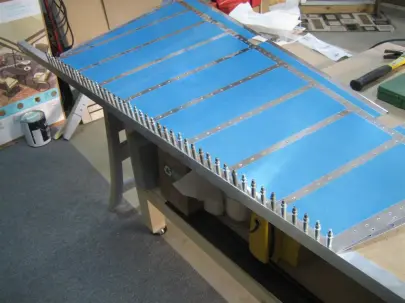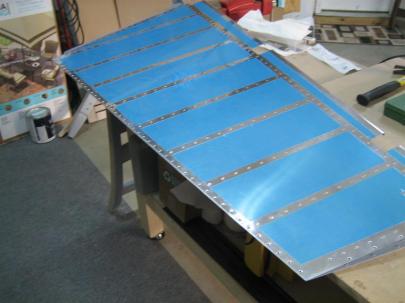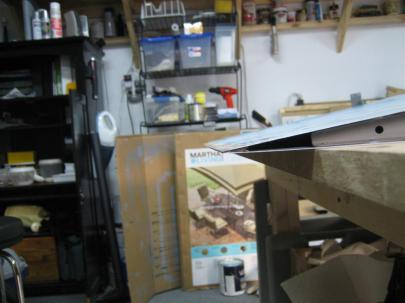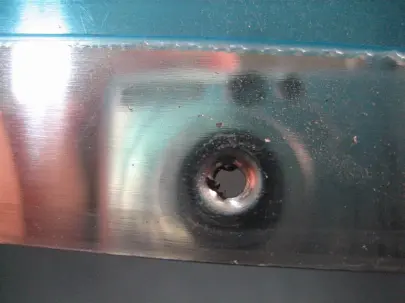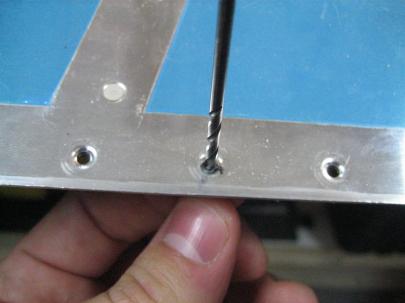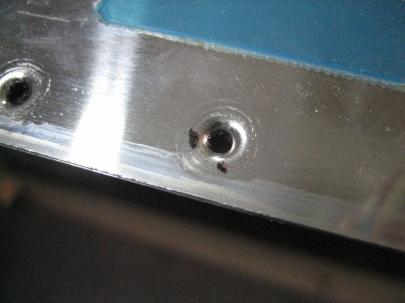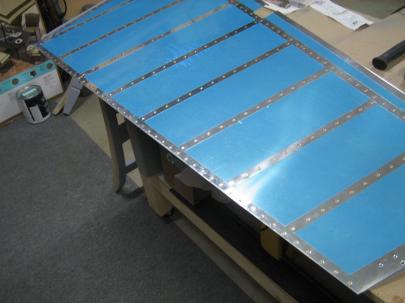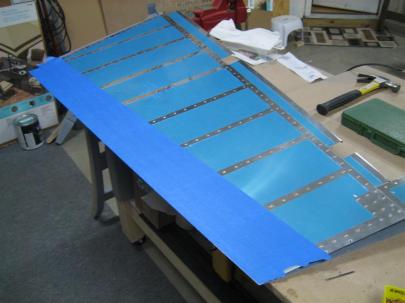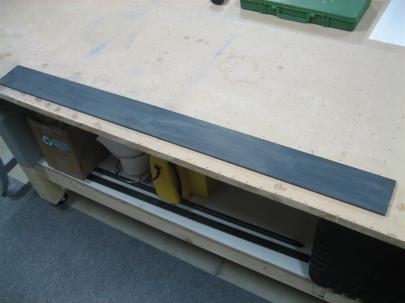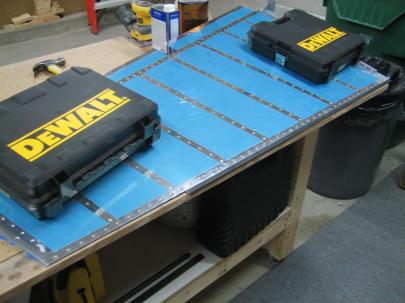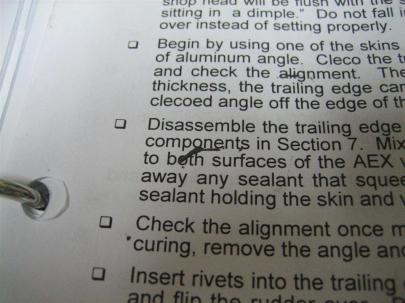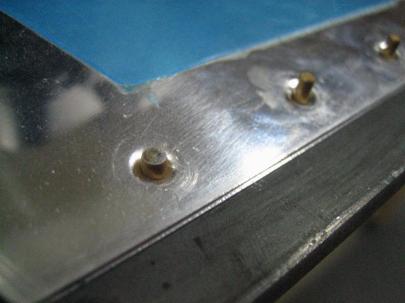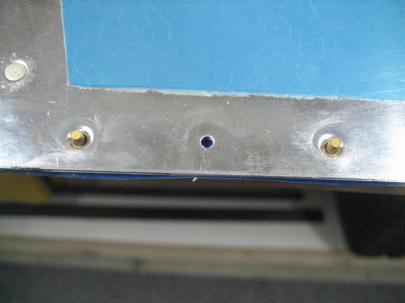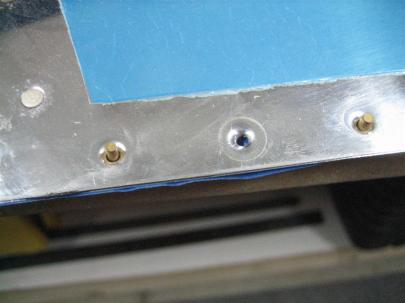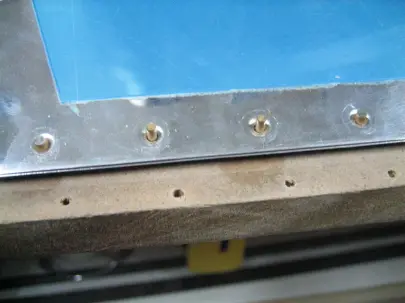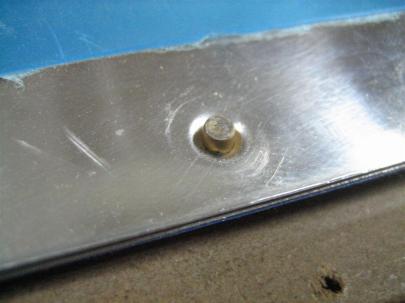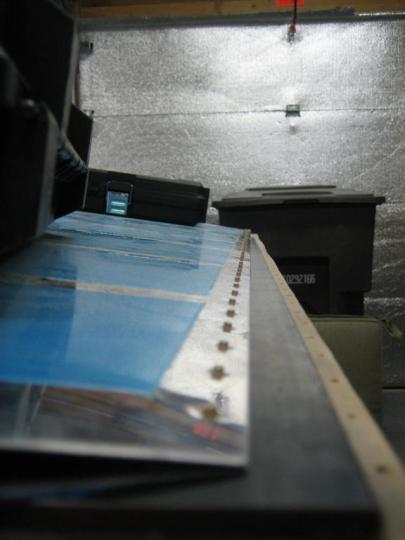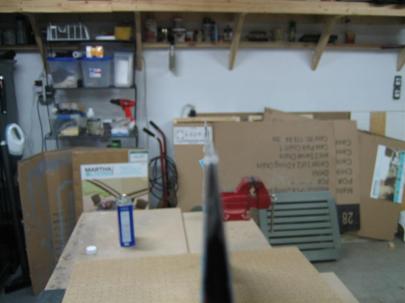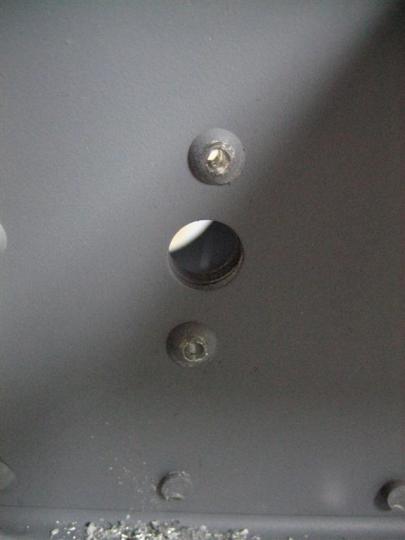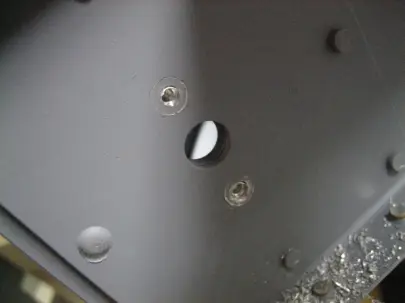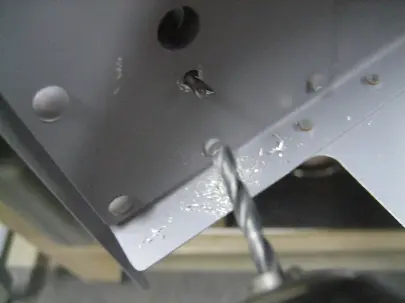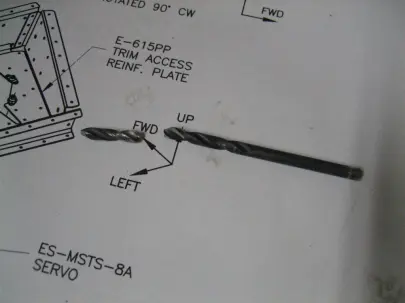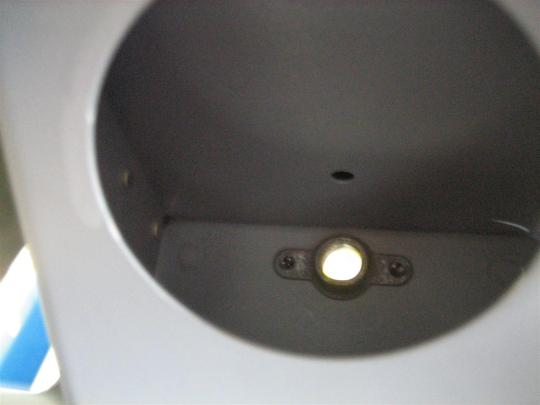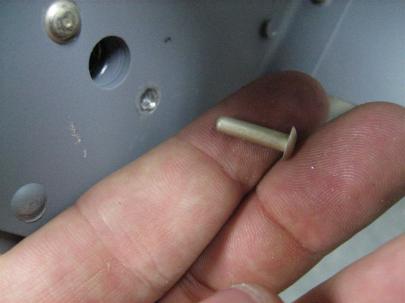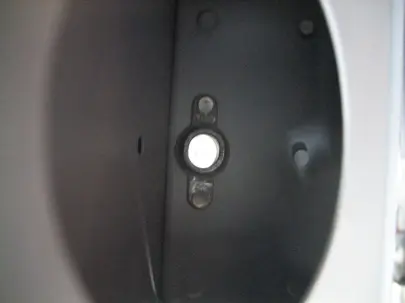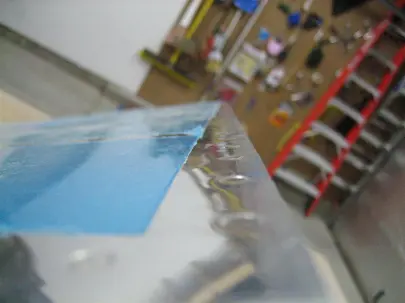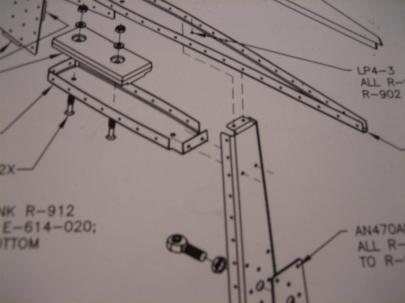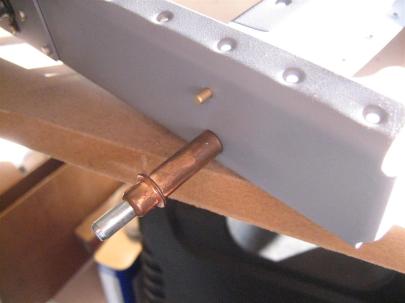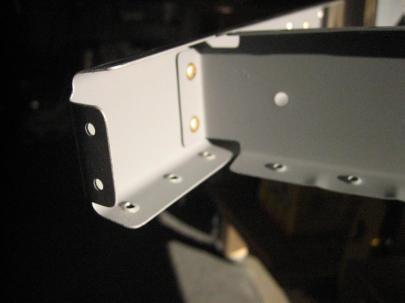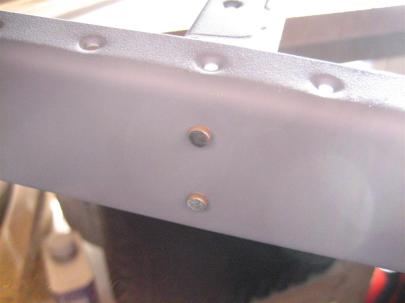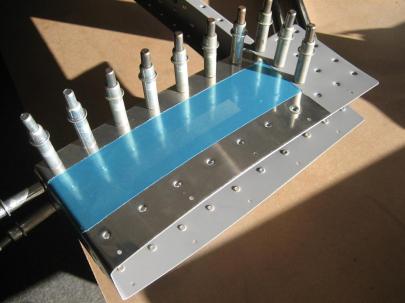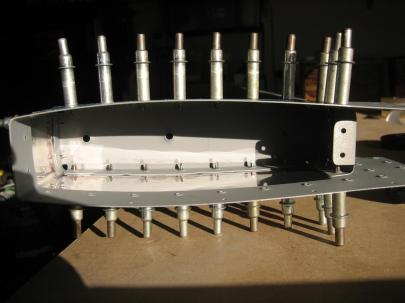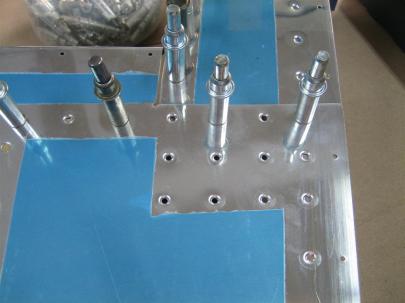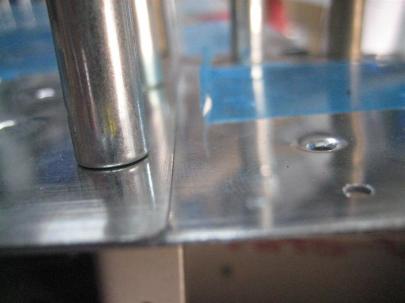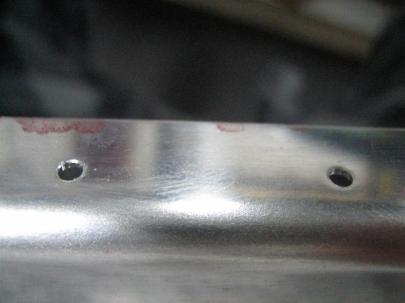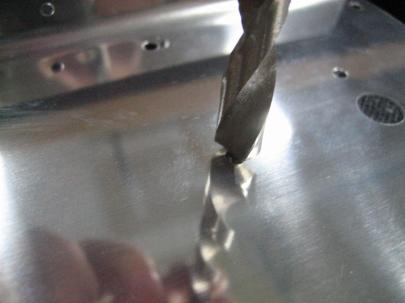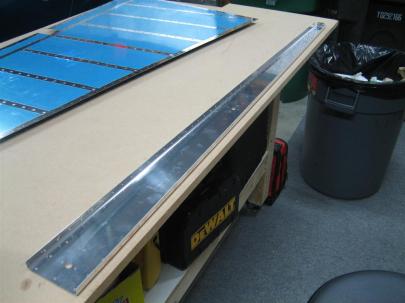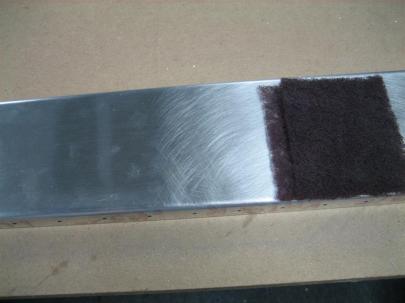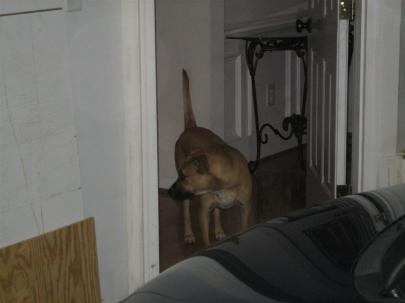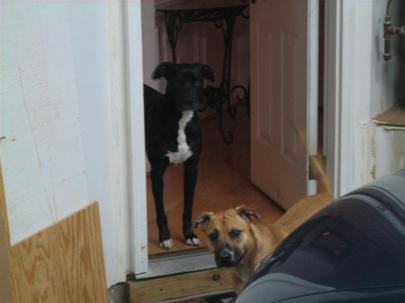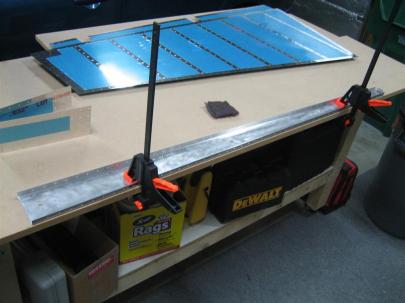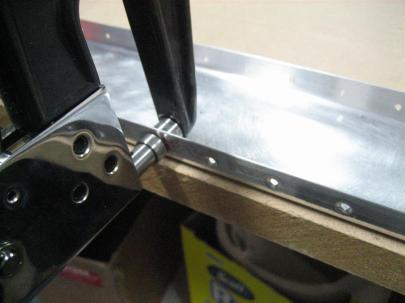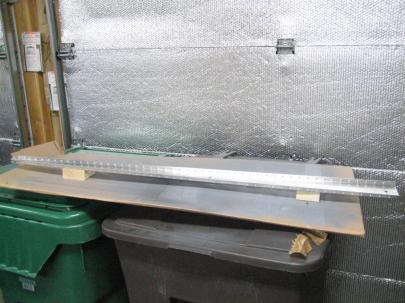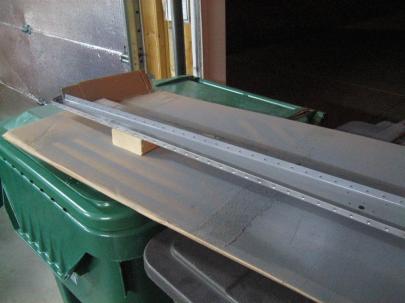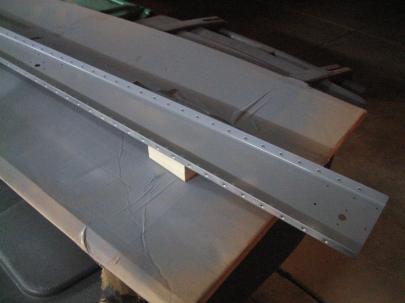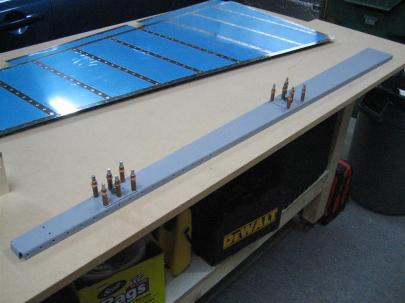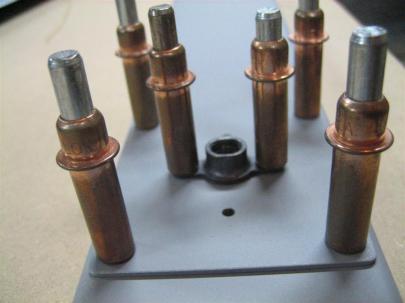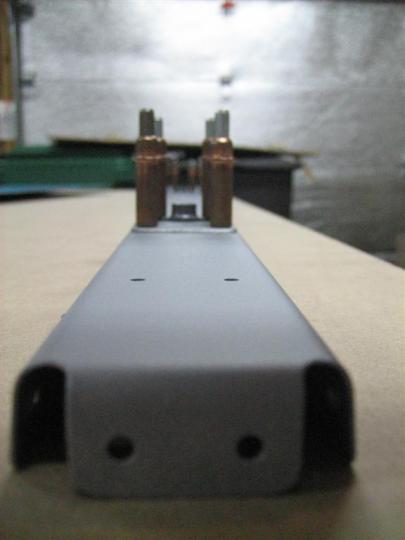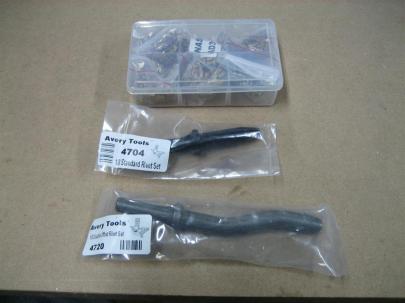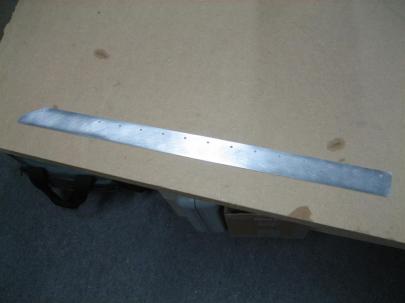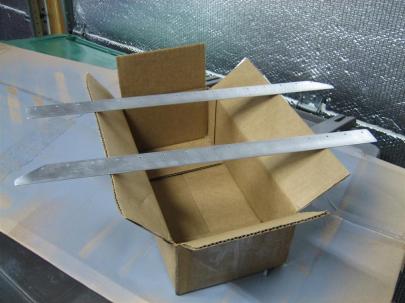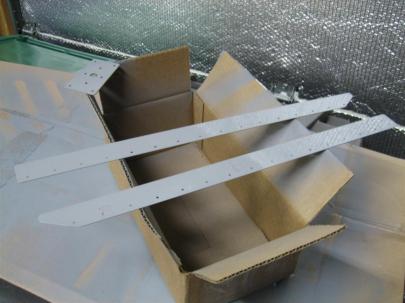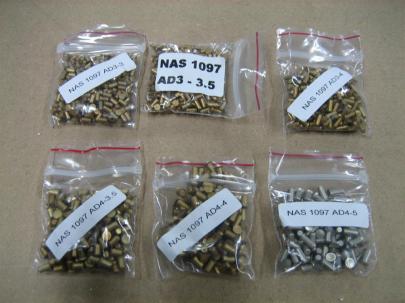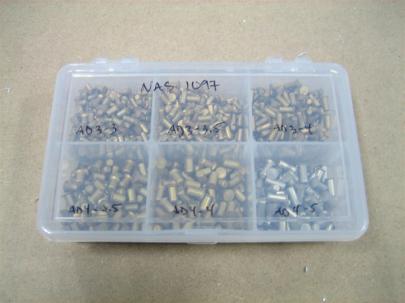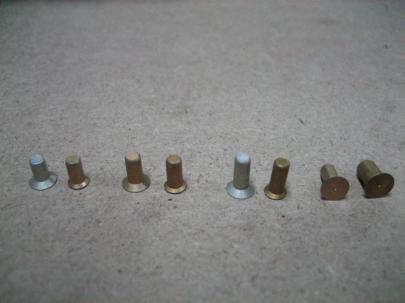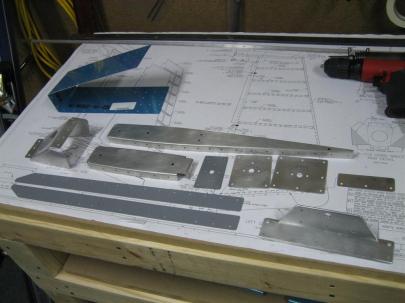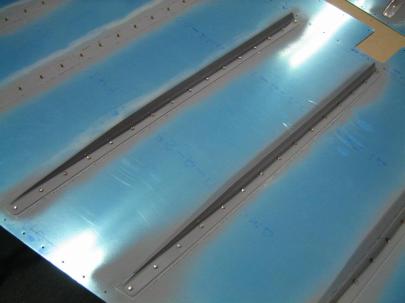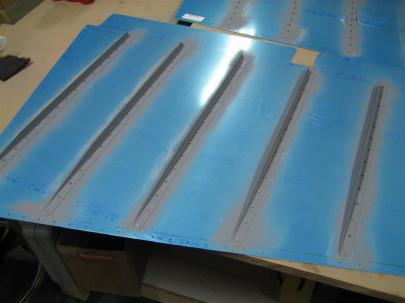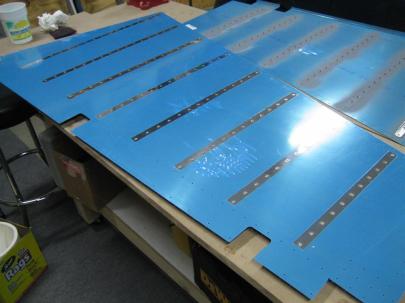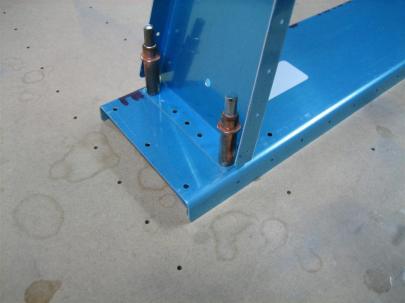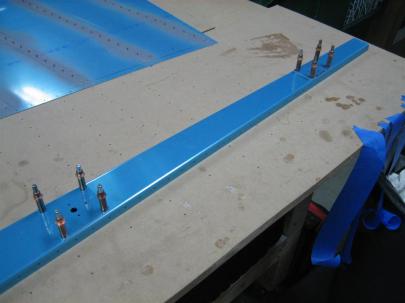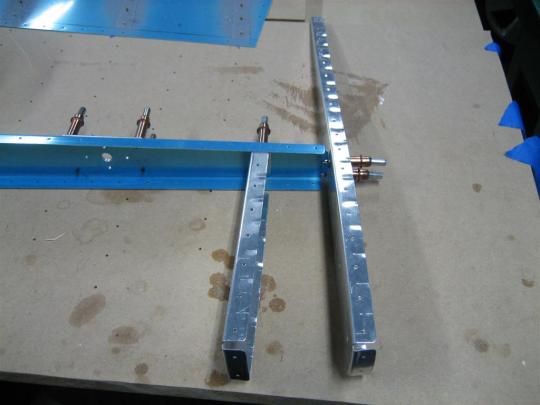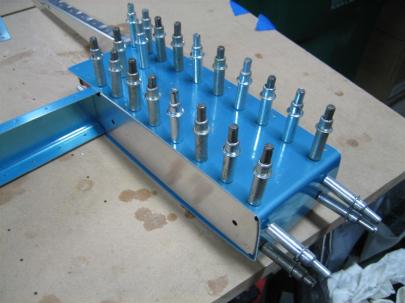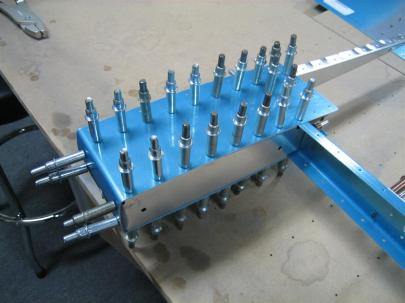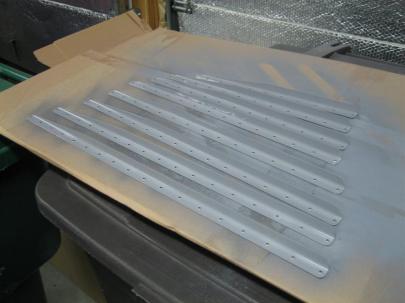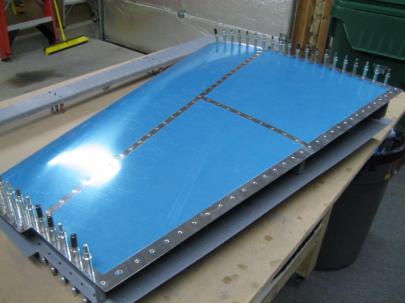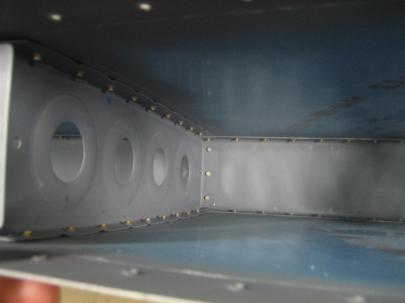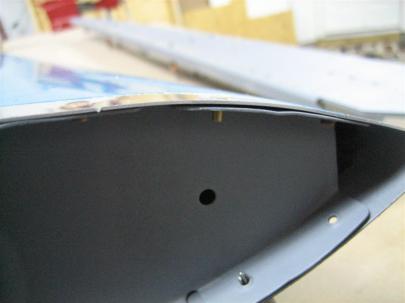Prev | Next
In between some yardwork, watching the sprinklers, and cleaning up the house, I made some good progress on the airplane.
First thing, I found a stiffener rivet that was sitting a little proud. (Drilled rivet #1 today.)

Off with your head!
Silly me, though, I didn’t get any pictures of it after it was reset. I was being lazy with the camera today. Sorry.
Next up, skin deburring and dimpling.

The holes on the right are the tip rib #40 holes. The ones on the left have been drilled to #30.
After deburring, scuffing and dimpling, we are ready for priming.

The top of the right rudder skin after deburring, scuffing and dimpling.
Then, more deburring, scuffing and dimpling.

I didn't forget the hole on the bottom of the picture. This hole is match-drilled with the rudder tip and then dimpled to #30.
After cleaning, I shot a little primer on the skin.

Primed right rudder skin.
I had a very specific order here. First, deburr, scuff, dimple and prime the top, forward edge, and bottom edge. Then, while the primer is drying, devinyl the aft edge (vinyl used as masking for the primer), deburr, scuff and dimple the aft edge. This edge doesn’t get primed, as we’ll use the fuel tank sealing instructions with Pro-seal to glue the trailing edges together.
After scuffing the aft edge, I started pulling off the blue vinyl from the interior of the skins.

This just looks so nice.

Another shot of me devinyling.
Then, I spent a couple minutes making the slot at the bottom of the skin a little bigger. One of the flanges from the control horn fits in here, and during initial assembly, there was some interference.

Notch enlarged.
And the left skin, primed.

Got the left skin primed and ready for devinyling.
Ame thing on this skin, while the primer was drying, I devinyled the trailing edge, scuffed, and dimpled.

Scuffed and dimpled the trailing edge.
Here’s the left skin after devinyling. I’ll store this skin until final riveting. Now, back to the skeleton.

Shot 1 of 2 of the prepped left rudder skin.

Shot 2 of 2 of the prepped left rudder skin.
In the middle of the day, I ran out of primer and scotchbrite pads, so I ran out for both.

Napa 7220 Self Etching Primer.

Maroon scotchbrite pads.
They didn’t have any maroon on the shelf, but they had some grey. I asked the guy out front, and he went to the back and grabbed 3 unpackaged pieces. Usually, there are $5 or $6 for the three. He gave them to me for a couple dollars, which was nice.

I like them cut in about 2" x 2" squares. Good to go until the end of the tail kit, I'm guessing.
I had some trouble with dimpling the last three holes in the rudder bottom rib. I drilled and countersunk a hole in a spare piece of steel I had, then realized it was too far from the edge to work. Awesome. Here’s a shot of my second attempt.

The new hole is on the bottom right. After countersinking, I used a rivet and my flush set to dimple the rib. Not perfect, but it'll work.
Then, I moved on to some riveting.

This is the spar and one of the spar reinforcements.
While I was moving everything around getting it ready for riveting, I broke my first tool. Now, it was about $0.50 from Harbor Freight, but I was still upset.

RIP cheap plastic clamp. (I'm lying. I actually gut the orange part off the other side and threw the clamp into a box somewhere. I'm sure it will come in handy at some point, even if it doesn't have the orange pads.)
Rivets were looking good, until the one to the right of the nutplate. Doh!

Which one of these is not like the other?
After a successful drill out (#2 of the day), I finished setting the rest of the spar reinforcements and snapped these two pictures.

Middle spar reinforcement.

Upper spar reinforcement.
That’s 16 set so far.
Then I mocked up the R-405PD Rudder Horn, R-710 Horn Brace, R-917 Shim, R-902 Spar, and R-904 Bottom Rib. Some people need to use blind rivets in some of these holes, but I figured I could do it with all solid rivets.

This is what I need to end up with after riveting.
I figured out that if I take off the R-904 bottom rib, I can reach in from above (bottom right of the picture) and get the horn brace to rudder horn rivets here, then slide the forward flange of the bottom rib under the rudder horn and get those from the lightening hole. Here I am setting the horn brace to rudder horn rivets.

I think this is going to work out well.

Another shot from further away.
Here’s all four of those set (set nicely, if I may add).

Horn brace to rudder horn rivets.
20 rivets set so far. Then I moved on to the R-606PP Reinforcement plate to R-902 Spar to R-917 Shim to R-405PD Rudder horn rivets. These need to be AN470AD4-7 rivets, which are LONG. I did have to drill one of them out. That’s #3 for the day. Boo.

This is an AN470AD4-7 rivet after drilling out. This is a long rivet.
But, I managed to reset it okay and get the others in with no trouble.

R-606PP to R-902 to R-917 to R-405PD rivets.
23 set. I scratched the R-405PD horn a little, so I scotchbrited it out, and shot some primer in there.

Some primer to cover the scratch.
Next, I slid the flange of the bottom rib under the rudder horn and lined up the holes. Now I need to drop some rivets in here.

Ready for riveting.
First, I set the horn brace to bottom rib rivets.

26 rivets set so far. These are looking good.
26 set. Finally, I set three more which are reinforcement plate to spar rivets.

These are above the bottom rib, so they are only reinforcement plate to spar rivets. Easy.
I started to rivet the complicated stuff together and LOOK WHAT I DID!

I think this is hilarious. Think I should drill it out?
This happened because I was bucking from above and shooting from below. The gun jumped around cause I was supporting it’s weight instead of letting gravity help me. That’s a no-no.
It was pretty easy to drill out (#4 for the day), here’s an inside shot; back to square one.

Ready to try again.
After setting the first two, a picture.

These look good.
And after much consternation (including using my double offset set as a bucking bar), I got the two outside rivets bucked.

Finally done with riveting for the day.
30 rivets set, 4 drilled out. Lastly, I matchrdrilled the E-614-020 to R-912 rib. This was a piece of pie.

Rudder counterbalance matchrilled to the counterbalance rib. Also, there's the hardware that will be used to fasten these two together.
4.5 hours today. Not bad for a Saturday afternoon.
Prev | Next






 Posted by Andrew
Posted by Andrew 












